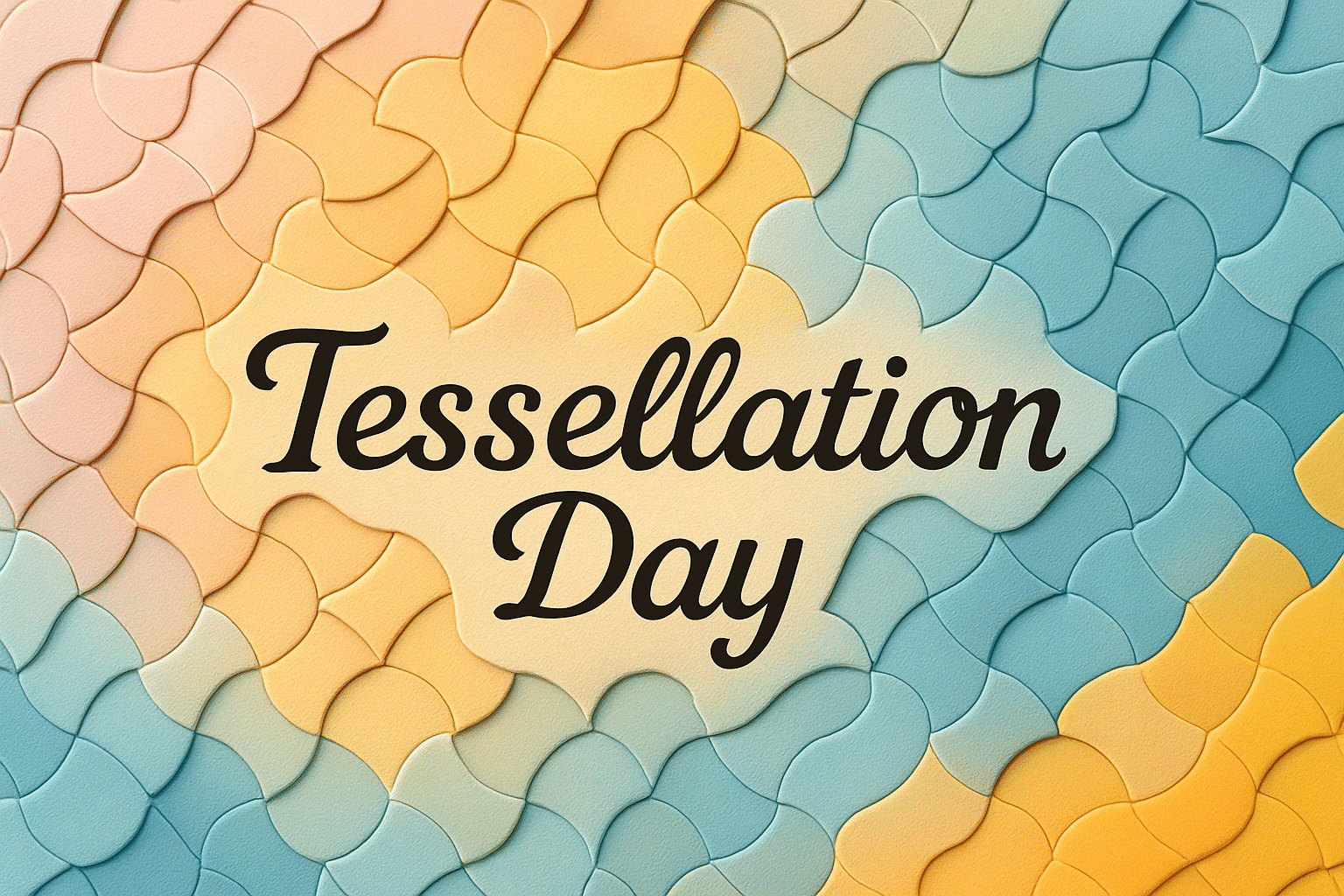What is World Tessellation Day?
World Tessellation Day is celebrated each year on June 17 to honor the beauty and logic of tessellations. These are repeating patterns of shapes that fit together perfectly, without gaps or overlaps. Found in art, nature, and architecture, tessellations bridge the gap between creativity and mathematics.
The day celebrates both structure and imagination. Artists, educators, and math enthusiasts use the opportunity to explore how geometry and design come together in everything from honeycombs to tiled mosaics. Whether drawn by hand or designed digitally, tessellations reflect the elegance of repetition and symmetry.
History and Origin
World Tessellation Day was founded in 2016 by Emily Grosvenor, a children’s author who wanted to celebrate the birthday of Dutch artist M.C. Escher. Known for his mind-bending optical illusions and complex patterns, Escher brought global attention to the beauty of tessellation in art.
Since then, schools, museums, and individuals have joined the celebration with creative projects and learning activities. The day encourages people of all ages to look closer at the patterns that surround them and to understand the principles that shape them.
Who participates in World Tessellation Day?
- Artists and illustrators: Explore tessellation through color, texture, and form.
- Teachers and students: Use math-based activities to discover patterns and symmetry.
- Mathematicians: Share knowledge about geometry and tiling systems.
- Crafters and designers: Apply tessellation in quilts, ceramics, and graphic design.
- Nature lovers: Observe real-world tessellations like beehives or reptile scales.
Slogans and Themes
Slogans include “Where Art Meets Math,” “Tessellate and Celebrate,” and “Patterns That Fit.” The focus is on the connection between beauty and structure, logic and creativity. The day emphasizes discovery, problem-solving, and artistic freedom.
Colors, Symbols, and Patterns
Colors
- Bright primary tones: Used to emphasize shape and contrast.
- Natural earth tones: Reflect tessellations found in the environment.
- Geometric blues and greens: Often seen in classroom and design materials.
Symbols
- Interlocking tiles: Represent the precision of tessellation.
- Mosaic panels: Suggest artistic arrangements of repeating forms.
- Hexagons and triangles: Simple shapes that tessellate naturally.
Patterns
- Geometric tiling: Found in ancient architecture and modern design.
- Escher-style figures: Iconic interlocking images of animals and shapes.
- Honeycomb grids: Nature’s most famous tessellation.
Most Used Hashtags
- #WorldTessellationDay
- #TessellationArt
- #PatternDesign
- #MathAndArt
- #EscherInspired
How do you celebrate World Tessellation Day?
- Create your own design: Make tessellations with paper, stencils, or digital tools.
- Join a class or workshop: Learn the math behind the pattern through hands-on activities.
- Walk and observe: Look for repeating shapes in buildings, tiles, or nature.
- Host a showcase: Display student or community-made tessellation projects.
- Share your work online: Use hashtags to join the global celebration and find inspiration.
Why is World Tessellation Day important?
World Tessellation Day shows how art and math are connected in everyday life. Patterns teach us about order, repetition, and balance. By exploring tessellations, people gain insight into both creative design and logical thinking.
The day encourages exploration, collaboration, and curiosity. Whether through artistic expression or mathematical challenge, tessellations invite us to find structure in beauty and beauty in structure.
Features
June 17: Tessellation Day
Why do you keep falling for the same type?
Read the article Lovemaps: the hidden blueprint of our love.

